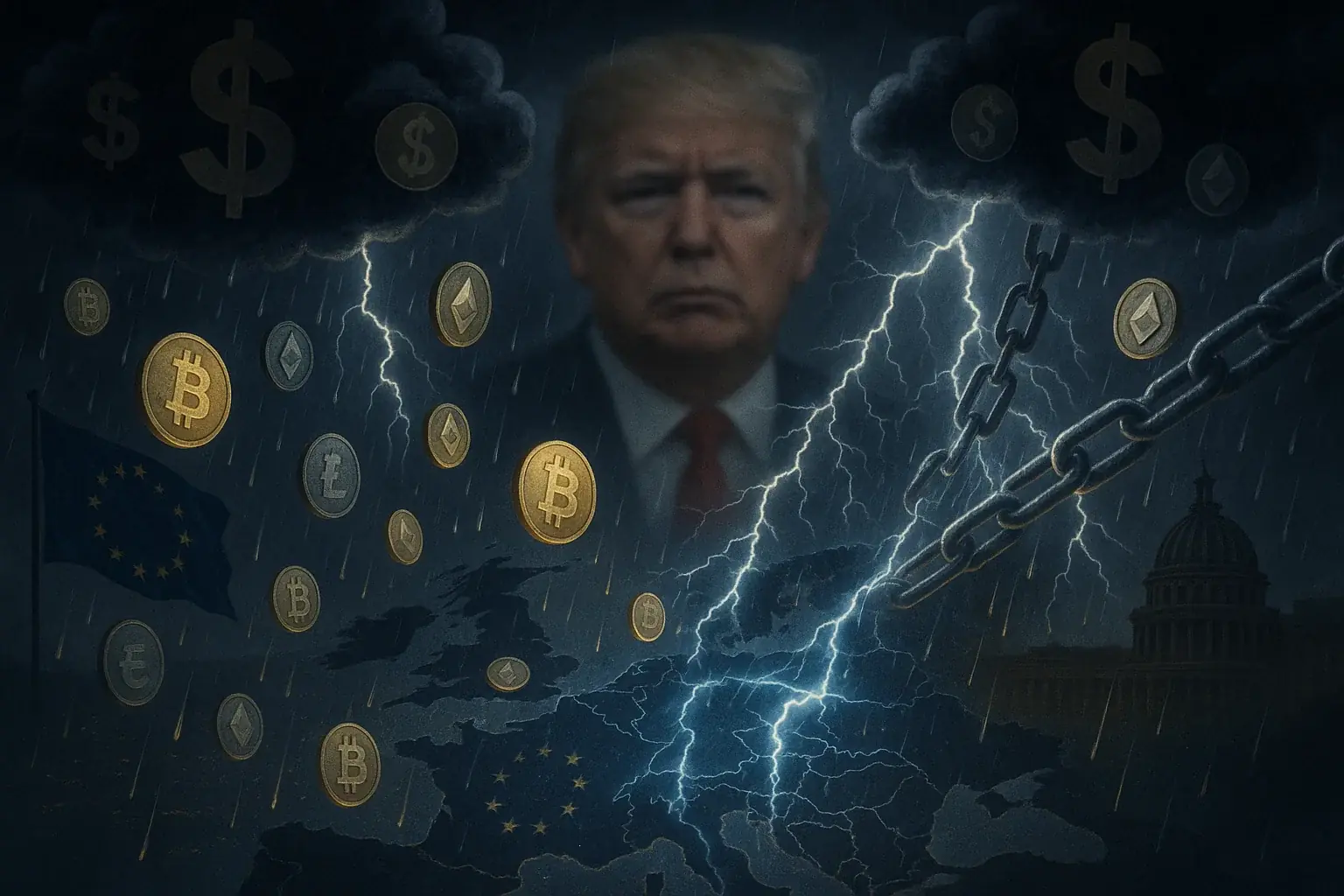
Europe Worried About Trump's Crypto Empire
The Trump family's crypto empire worries Europe: between multimillion-dollar investments, stablecoins and political fears, regulators are watching closely.


Get the latest news, learn from experts, discover new tools, and find inspiration right in your inbox.
No spam. Unsubscribe anytime.
A powerful documentary on how Bitcoin and blockchain are reshaping money, power, and geopolitics—from El Salvador’s Bitcoin experiment and Europe’s regulatory revolution to the rise of decentralized finance and the new global financial order.
Recent developments regarding the cryptocurrency ventures of the Trump family are generating growing interest and concern in Europe, where regulators are closely monitoring the crypto sector's evolution and potential for political influence.
The focus is on World Liberty Financial ($WLFI), as well as on the rapid activity related to digital assets, mining and a new direction in the geopolitical distribution of digital assets.
Raising of 100 Million Dollars from the United Arab Emirates
Funds from the United Arab Emirates are among the investors in the Trump family's latest initiative. According to a recent announcement, the Aqua1 Foundation has purchased $WLFI tokens worth $100 million, becoming the project's largest public investor.
According to joint statements, World Liberty aims to expand into Latin America and Asia, with European expansion already planned. The participation of investors from the Emirates and Asia raises questions among European regulators about the origin of the funds, the transparency of operations and the consequences for financial control.
Strong income increase of Trump
In his latest financial reports, Donald Trump indicated over $400 million in revenue from World Liberty and another $57 million from the sale of $WLFI tokens. At the same time, the Trump family has strengthened its positions in other crypto assets: the $TRUMP memecoin (with estimated profits between $350 and $600 million), Bitcoin mining and Bitcoin-related ETFs.
For European financial regulators, this is a signal: the activity is not only connected to private interests, but also to a broad possibility of political influence.
According to reports from Decrypt, the Trump-linked entity DTMarksDEFILLC has reduced its stake in World Liberty from 60%.
These changes may be an attempt to alleviate concerns about control and conflicts of interest, but questions remain about who acquired these stakes, how and to what extent European regulators can verify the identity of the new owners.
Growing Political Resonance
European regulators are also closely observing these practices.
The EU is actively reviewing the regulation of decentralised financial instruments and stablecoins, such as USD1, the dollar-pegged stablecoin linked to the Trump-WLF project. In the context of the new European MiCA (Regulation on Crypto Assets Markets) law, verification of the origin of capital and political links is of crucial importance.
Potential Risks And EU Reaction
As you reflect in Europe
Financial regulators in France, Germany and Italy have already begun consultations with their European colleagues on the status of stablecoins and trust in crypto projects.
Banking unions are discussing the KYC/AML requirements for holders of governance tokens.
Institutional investors, accustomed to the stable and transparent conditions of the MiFID regulations, view with suspicion the strategic involvement of Middle Eastern funds in politically sensitive crypto projects.
Predictions and Possible Scenarios
In Summary
The advance of World Liberty Financial and the Trump family's other crypto ventures remains a point of tension and focus in Europe: the MiCA legal framework is coming into effect, while banks and regulators tighten controls.
It remains to be seen how the EU will react to potential risks of influence through digital assets.
Read Next
Coinbase: arrest in India for internal data breach
A former customer support agent of Coinbase was arrested in India for corruption and data theft. Over 69,000 users involved and costs of USD 355 million.
LastPass Hack: 35 million in crypto laundered by Russian hackers
An investigation by TRM Labs reveals how Russian hackers laundered more than $35 million in cryptocurrency stolen from LastPass users.
Andrew Tate accused of on-chain crypto laundering
A report reveals links between Andrew Tate and a $5 million scam in Texas, with suspicious flows of $30 million to privacy protocols.
Hack Trust Wallet at Christmas: $7 million stolen
A critical bug in Trust Wallet's Chrome extension caused the theft of around $7 million in crypto. Here's what happened, who is at risk, and how to protect your funds.